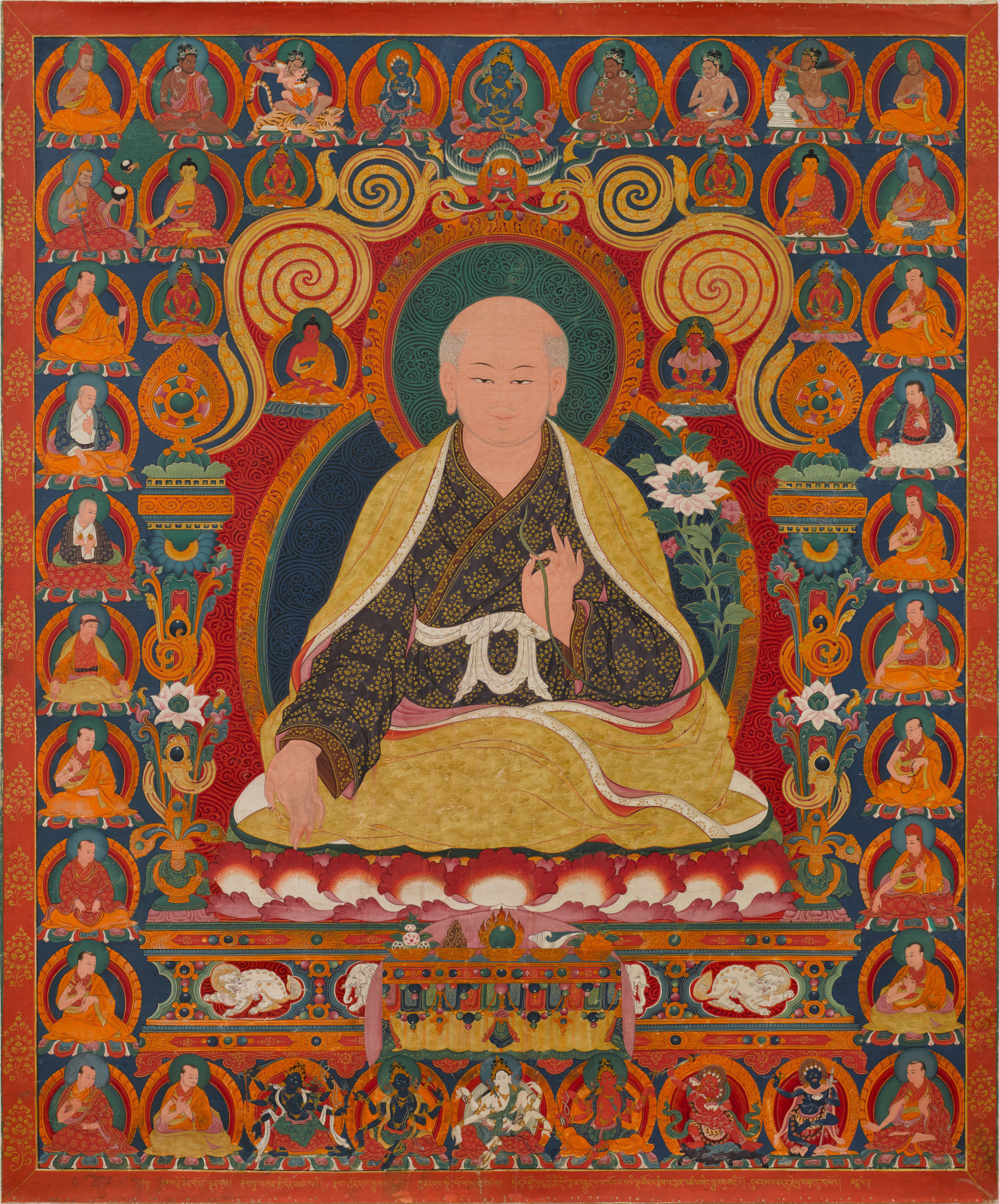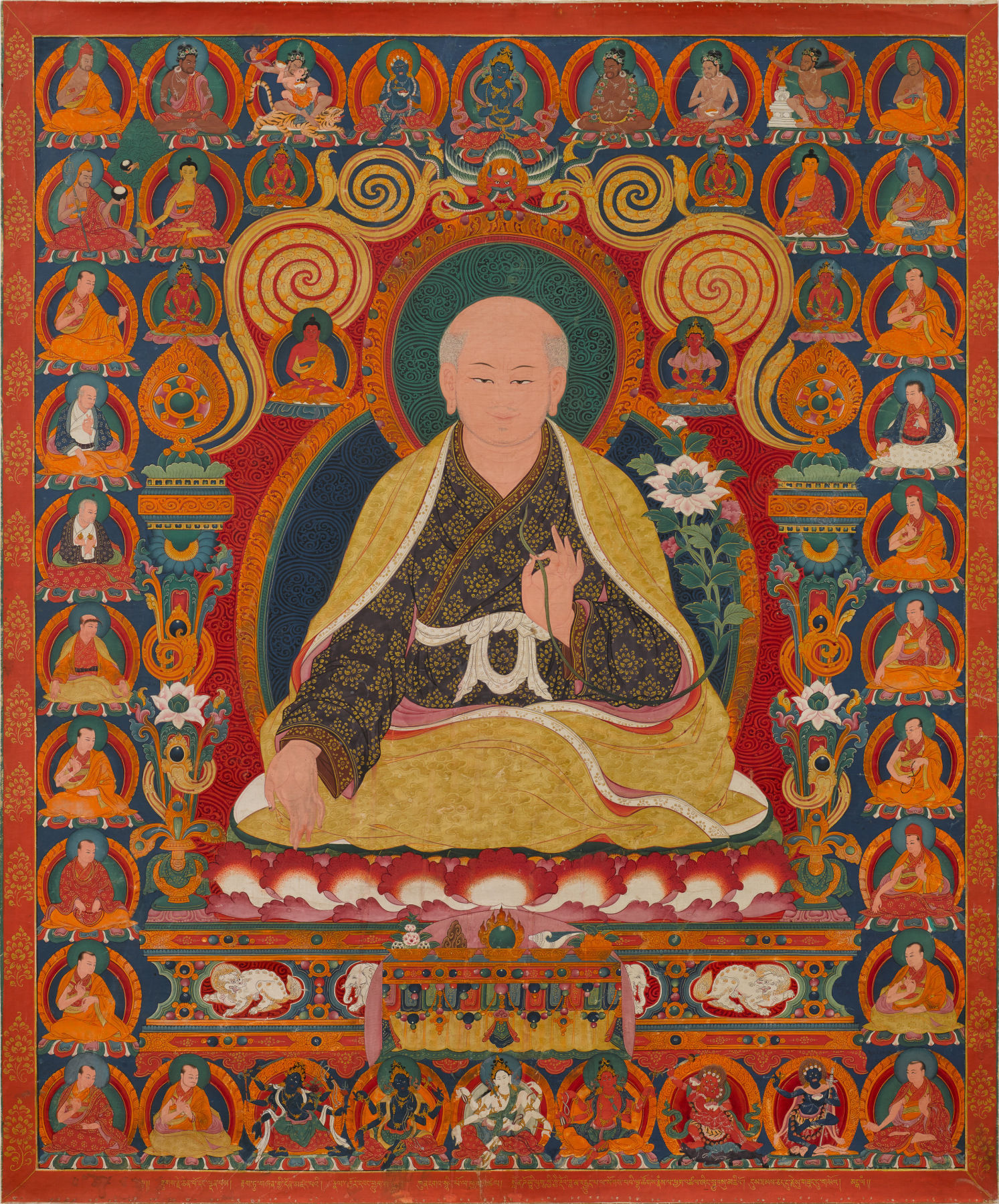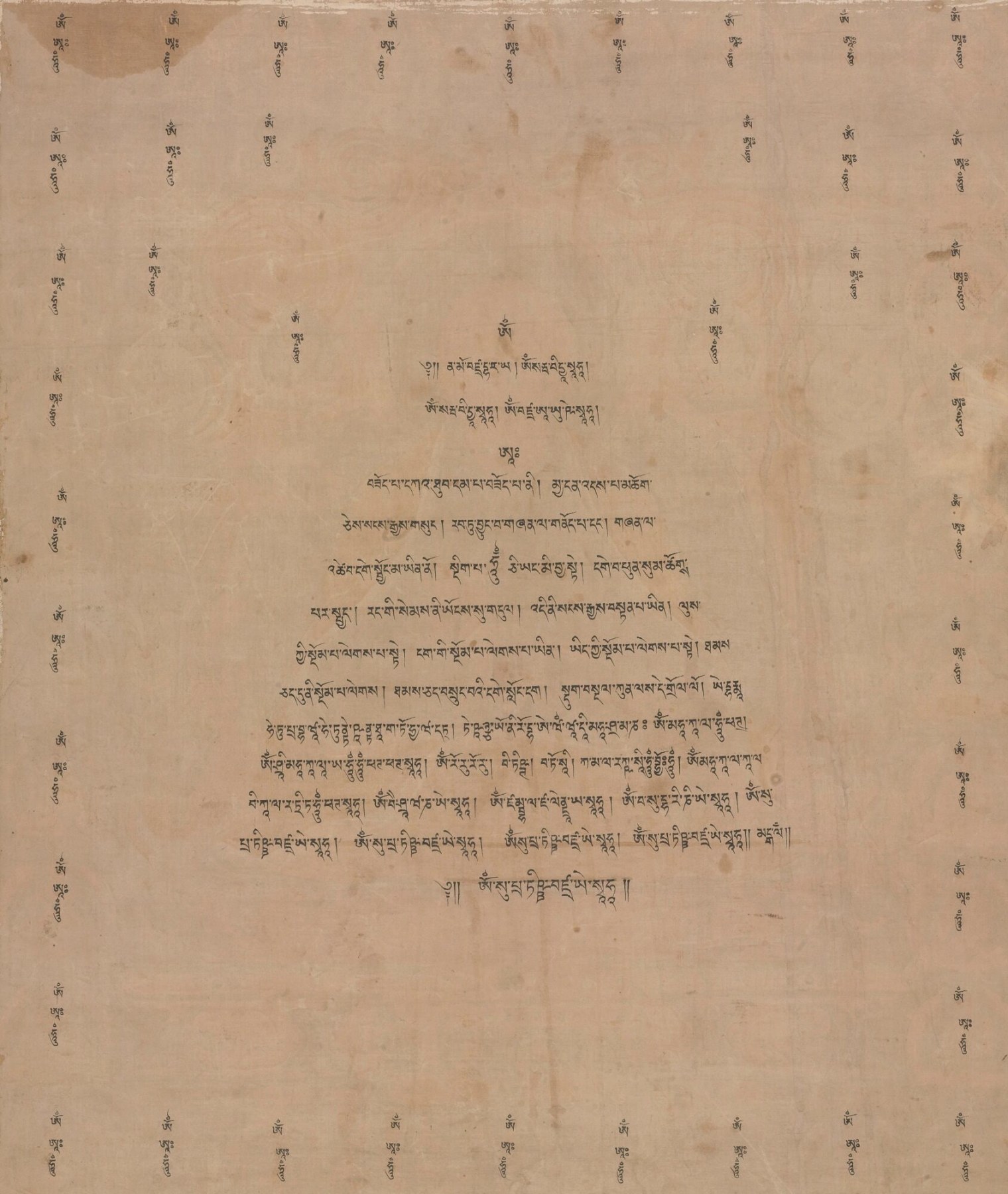
Provenance:
New York Private Collection, acquired in the 1960s
Sotheby's, New York, March 20, 2013, no. 238 and cover illus.
American Private Collection
Published:
Jeff Watt, Himalayan Art Resources, item no. 60691
This exquisite painting depicts Sachen Kunga Nyingpo (1092-1158), one of the Five Superiors of the Tibetan Sakya order. His portrait is one of the most recognizable of all historical Tibetan personages, almost always portrayed with a balding pate, lightly bearded and mustached, and with wispy grey hair at either side of the head. He is often distinguished by a yellow outer robe, depicted here in an elegant interpretation of Ming-dynasty cloud-patterned silks.
The striking and unusual pure-white lotus-flower seat with pink- and red-tipped petals signifies the master’s spiritual enlightenment, and the lapis lazuli wish-granting jewel (ratna) placed on the table before him evokes the ideals of the universal monarch (chakravartin). Details throughout the painting are rendered with precision and charm, from the finely-observed tiger mount of mahasiddha Dombi Heruka and consort in the upper register, the surreal scene in the upper left corner of a hand holding a begging bowl (patra) appearing from the foliage of a tree, the characterful snow lions and white elephants in the recesses of the throne, to the painstakingly drawn scrollwork on the deep reds, blues, and greens of the shrine, aureole, and halo.
The thangka is one of a renowned set of paintings that celebrate the lineage of Indian mahasiddhas and Tibetan masters that transmitted the core Sakya teaching of Lamdre (margapala), ‘The Path Together with the Result.’ The series was dispersed in the 1960s, with individual paintings now in museums and private collections worldwide.[1] This painting is perhaps the centerpiece of the set in recognition of the highest esteem in which Sachen Kunga Nyingpo is held in the Sakya school: it is the only example that has come to light to have an altar table with auspicious offerings placed before the master, wish-fulfilling gems in the flaming halo, and a celestial arch (prabha) guarded by Garuda devouring snakes at the apex. Others from the series that depict the Five Sakya Superiors—Dragpa Gyaltsen, Sonam Tsemo, and Chogyal Pagpa (the Sakya Pandita from the set remains unrecorded)[2]—have flaming jewels on pillars at either side, while this painting, uniquely, has ‘wheels of the law’ (dharma chakra) in another indication of special focus placed on this portrait within the series. Common to all the paintings, however, is the overall composition of the surrounding Indian and Tibetan masters, deities below, red borders with gold floral motif on either side, and Tibetan inscription beneath.
The inscription on the lower margin may be freely translated as “... Homage to Sakyapa Kunga Nyingpo, the mighty lord of Yoga, who always acts for the welfare of others since he is endowed with great compassion! We pay homage to and seek refuge in the assembly of deities, headed by the lineage of vajra masters, belonging to the tradition of Dombi Heruka. May we be taken into their following at all times! Let there be good auspices! ...”
Additional works from this series can be found in collections at The Rubin Museum of Art, the Brooklyn Museum of Art, the Los Angeles County Museum of Art, The Metropolitan Museum of Art, et. al.
1 Watt, op. cit., Margapala Lineage [1] (Ngor set)
2 Ibid., Five Superior Teachers


